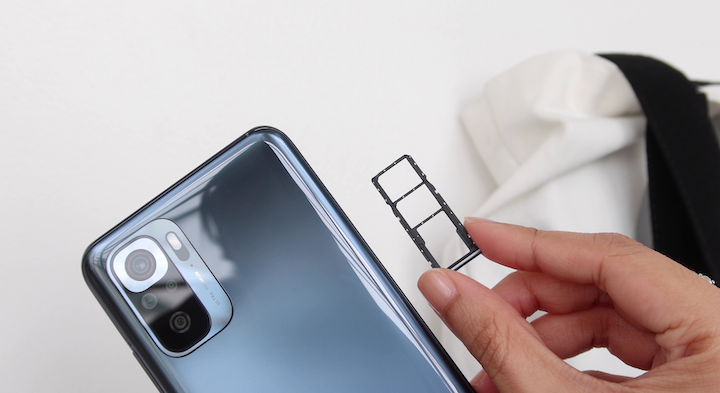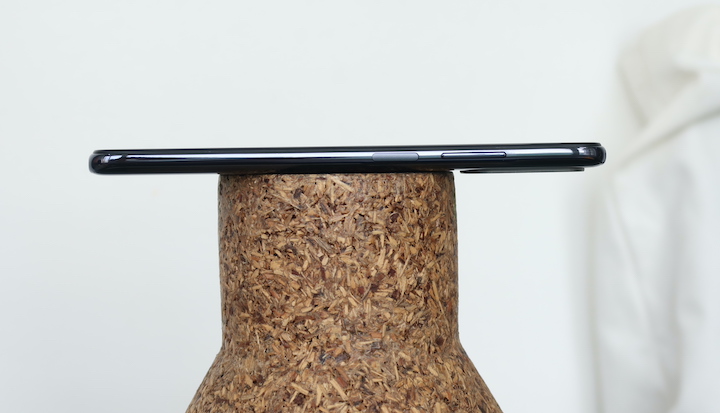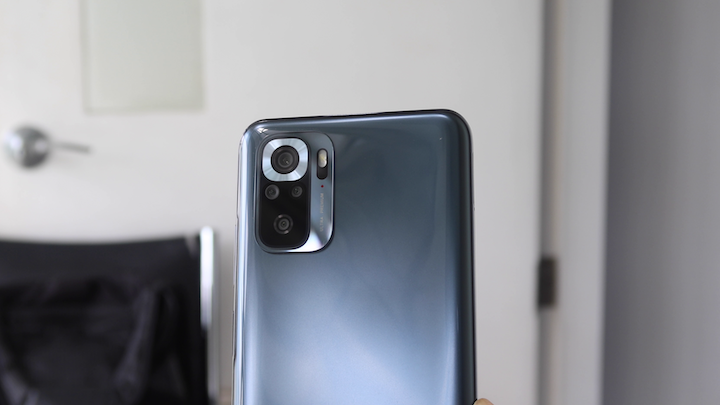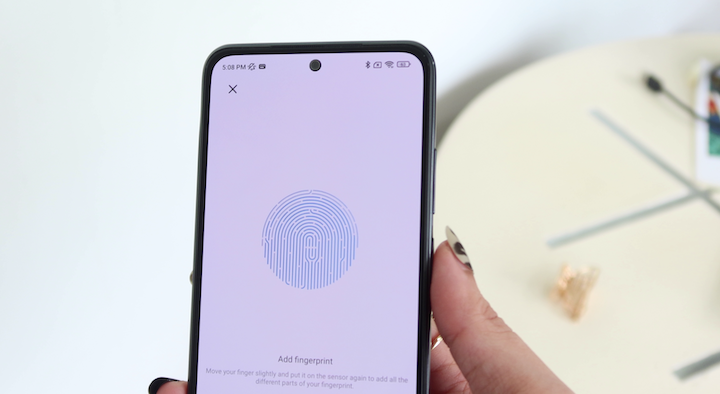In case you don’t know it yet, the Xiaomi Redmi Note 10S or any variant in the Redmi Note series that has an “S” on its name, is supposed to be like an in-between option, or should I say the safe choice. On paper, the Redmi Note 10S is more affordable than the Redmi Note 10 Pro but packs better hardware and camera specs than the regular Redmi Note 10. But with the slight price difference between the 3, is it still worth getting? Keep on reading for our full review.

Table of Contents
Sporting the same style and build as the vanilla Redmi Note 10, you can distinguish the two with the silver lining on the Note 10S’ camera module. It can be discrete so you can’t really tell from afar if this is the Regular Note 10 or even the Pro version. Nonetheless, this glasstic design with a metallic frame looks classy, especially in its price range. However, we still advise placing a case on it because it can easily attract fingerprint smudges.

The camera module seems to have a touch of glass, and in it, you can find 4 rear lenses, the LED flash, and a text that says “ultra-premium”.

Now one of the plus features that you’ll get with the Redmi Note 10 series is their IP53 rating, so some dust, rain, and small water splashes are fine. By the way, the unit we have is in the classic Onyx Gray color, but it’s also available in Pebble White and Ocean Blue.

Found on the left side is the triple card tray for two nano-sized SIM cards and a microSD card.

While located on the right are the volume keys and the power/lock button that doubles as the fingerprint scanner. The buttons are clicky and are pretty easy to reach.

Then up top, there’s a loudspeaker, IR blaster, and secondary microphone.

At the bottom, we’ll find the 3.5mm audio jack, main microphone, USB-C port, and another loudspeaker.

Upfront we get a 6.43-inch AMOLED screen with a resolution of 2400 x 1080px, a pixel density of 409ppi, and a peak brightness of 1100 nits. It’s basically the same display that you get with the regular Redmi Note 10. The bezels look relatively slim with the call speaker on the top part, and as you can see we get a punch hole notch on the upper-middle, which you can still hide with a black bar in the settings.

For protection, it’s covered with Corning Gorilla Glass 3, however, it doesn’t come with a pre-installed screen protector, so you’ll have to purchase that separately if you want additional protection.

This AMOLED display looks really vibrant with sharp details, deep blacks, and good viewing angles. Much like its siblings, we like how it can get vividly bright even for outdoor use. If you’re looking for a 90 or 120Hz refresh rate, well that’s reserved for the Pro model, so we only get the standard 60Hz still.
In the display settings, you can choose between Auto mode, Saturated, and Standard. Additionally, you have the option to adjust the color temperature and white balance, turn on anti-flicker mode and take advantage of the reading mode to reduce eye strain.

As for audio quality, since we get a dual-stereo setup, it can get really loud compared to other smartphones in its price range. Oftentimes we get a balanced mix of mids and highs but expectedly still lacks bass. Thankfully you can always use your wired headsets on it for an even better listening experience.
We get a slight upgrade in this department with a 64MP main shooter, an 8MP ultra-wide, a 2MP macro, and a 2MP depth sensor. Meanwhile on that punch hole notch is the same 13MP front cam as the lower Redmi Note 10.

Quality-wise, photos taken with the main rear camera often look natural and detailed with some parts looking soft or muddy. This is probably an attempt to provide a depth effect, which works well in certain scenarios, but sometimes it just looks washed out. It isn’t always the case though. Noticeably, its dynamic range can be a hit or miss so we suggest taking multiples shots to avoid over-exposed photos.
The set of cameras allow you to zoom in from 2x, 4x, 6, 8, and up to 10x with still preserving some clear details. But if you want better quality, then you can always use its 64MP mode or the Pro mode that also gives quick access to the 64MP lens.
If you’re fond of taking ultrawide shots, then the Note 10S can deliver good color reproduction that often looks close to the standard camera mode. It looks good, but there are tendencies of having a slight fisheye effect.
The macro mode, on the other hand, works pretty decent. It’s also quite a hit or miss, but it produces sharp outputs when focused correctly.
As for night photography, it often looks shadowy and muddy without any AI or night enhancement turned on. But when we used its night mode on, we get more subtle details with better lighting effects.
Checking out some selfies, it looks a bit pale most of the time, but with very good lighting or sunlight, you can get a natural-looking photo.
The portrait mode provides good enough subject-background separation, plus you can adjust the aperture and blur style depending on what you prefer in post.
For videos, you can shoot up to 4K at 30 fps. The quality is sharp with good colors, but it doesn’t have any optical stabilization, so better to use a tripod or something to support if you want to have a steady video.
Running the software show is MIUI 12.5 that’s based on Android 11. It’s an improved yet familiar user interface that features custom icons and wallpapers.

Apps are arranged on the home screen, but there’s also an option for an app drawer if that’s what you prefer. There are still a few ads across the interface, but you can remove most of them by turning off the promoted apps toggle.

We get a number of bloatware and pre-installed apps, including Netflix, Amazon Shopping, LinkedIn, Booking.com, and Facebook that you can always uninstall if you don’t plan on using. And with 128GB of internal storage, this leaves us with a usable space of 106GB out of the box, that you can expand with the dedicated microSD card slot.

Users also have the option of customizing between a system-wide light mode or dark mode. Then, of course, there’s also the option to change the Control Center style if you want the simple and familiar drop-down style or the newer iOS familiar look that separates the notifications from the main control center. Personally, we prefer the new version.
Under the hood, the Redmi Note 10S looks quite different from its lower and higher Redmi Note 10 brothers. It’s equipped with a MediaTek Helio G95 chipset, together with a Mali-G76 MC4 GPU, and 8GB of RAM.

The regular Redmi Note 10 may already have capable internals with a Snapdragon 678, but the Mediatek G95 on the Note 10S gives an improved day-to-day use with lesser stutters. You won’t have any problems with casual multitasking such as social media scrolling, video streaming, messaging, and continuous calling. But as far as playing graphic-intensive games is concerned, you can still encounter a few frame drops every now and then, so it’s still best to play under the lowest graphic settings available. We did encounter minimal heating, but not to an alarming level.

Take a look at the benchmark scores we got:
• AnTuTu v8.3.4 – 278,206
• PC Mark – 8,206 (Work 3.0)
• Geekbench 5 – 507 (Single-Core), 1,647 (Multi-Core)
• AndroBench – 507.55 MB/s (Seq. Read), 364.65 MB/s (Seq. Write)
• 3D Mark – unable to connect to UL servers
Quickly on security, you can unlock the device via the side-mounted fingerprint scanner and through facial recognition. Both worked snappily and accurately. Honestly, we think that placing the fingerprint scanner on the side is a more convenient way to unlock your phone as it is quick and easy to access.

Connectivity-wise, the Redmi Note 10S is packed with Wi-Fi 5, Bluetooth 5.1, GPS, dual SIM 4G LTE, USB-C, and an IR blaster. A pretty standard set of connectivity features.

As for the battery, we get a large and now common 5,000mAh capacity with 33W fast charging, which took us around 1.5 hours to fully charge the device. When we ran it through the PCMark’s Work 2.0 battery test, the Redmi Note 10S yielded a score of 15 hours and 23 minutes. Meanwhile, in our standard video loop test (1080p video on loop, 50% brightness, 0% volume, earphones plugged in), we got a pretty good 20 hours and 40 minutes of playback.

The Xiaomi Redmi Note 10S has an official tag of PHP 11,990USD 204INR 17,321EUR 195CNY 1,488 (8GB + 128GB). Compared to the lower Redmi Note 10, the upgrade you’re really paying for with the Note 10S is the more optimized performance and slight upgrade on the camera department with a 64MP lens. Yeah, it’s not much of an upgrade but it’s still worth getting if you’re on a tight budget of Php12,000USD 204INR 17,335EUR 195CNY 1,489. Compared to other smartphones with closely similar specifications, this is slightly more affordable.
However, if you have the extra PHP1,000USD 17INR 1,445EUR 16CNY 124-2,000 money to spend, then we suggest that you mostly consider the Redmi Note 10 Pro instead.

And that wraps up this review. Share with us what you think about this Xiaomi Redmi Note 10S in the comments.
Xiaomi Redmi Note 10S specs:
6.43-inch FHD+ (2400 x 1080) AMOLED DotDisplay
Corning Gorilla Glass 3
MediaTek Helio G95 octa-core CPU
Mali-G76 MC4 GPU
8GB LPDDR4X RAM
128GB UFS 2.2 storage
Quad-rear cameras:
• 64MP F1.79 main
• 8MP F2.2 ultra-wide
• 2MP F2.4 macro
• 2MP F2.4 depth
13MP F2.45 front camera
Dual-SIM
4G LTE
WiFi 5
NFC (market dependent)
Bluetooth 5.1
GPS, A-GPS, GLONASS, GALILEO, BDS
USB-C
IR blaster
Fingerprint scanner (side)
Face Unlock
Dual-speakers
3.5mm audio jack
IP53 splash-proof
MIUI 12.5 (Android 11)
5,000mAh battery w/ 33W fast charging
160.46 × 74.5 × 8.29 mm
178.8 g
Ocean Blue, Onyx Gray, Pebble White

YugaTech.com is the largest and longest-running technology site in the Philippines. Originally established in October 2002, the site was transformed into a full-fledged technology platform in 2005.
How to transfer, withdraw money from PayPal to GCash
Prices of Starlink satellite in the Philippines
Install Google GBox to Huawei smartphones
Pag-IBIG MP2 online application
How to check PhilHealth contributions online
How to find your SIM card serial number
Globe, PLDT, Converge, Sky: Unli fiber internet plans compared
10 biggest games in the Google Play Store
LTO periodic medical exam for 10-year licenses
Netflix codes to unlock hidden TV shows, movies
Apple, Asus, Cherry Mobile, Huawei, LG, Nokia, Oppo, Samsung, Sony, Vivo, Xiaomi, Lenovo, Infinix Mobile, Pocophone, Honor, iPhone, OnePlus, Tecno, Realme, HTC, Gionee, Kata, IQ00, Redmi, Razer, CloudFone, Motorola, Panasonic, TCL, Wiko
Best Android smartphones between PHP 20,000 - 25,000
Smartphones under PHP 10,000 in the Philippines
Smartphones under PHP 12K Philippines
Best smartphones for kids under PHP 7,000
Smartphones under PHP 15,000 in the Philippines
Best Android smartphones between PHP 15,000 - 20,000
Smartphones under PHP 20,000 in the Philippines
Most affordable 5G phones in the Philippines under PHP 20K
5G smartphones in the Philippines under PHP 16K
Smartphone pricelist Philippines 2024
Smartphone pricelist Philippines 2023
Smartphone pricelist Philippines 2022
Smartphone pricelist Philippines 2021
Smartphone pricelist Philippines 2020